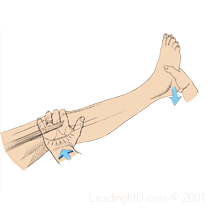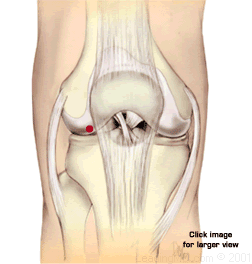ACL Injuries - Diagnosis

How is an ACL injury diagnosed?
The orthopaedic surgeon will want to know the history of the knee injury and will determine if the signs and symptoms of an ACL injury are present.

After taking a history, the orthopaedic surgeon will perform a physical examination. The doctor will perform manual tests on the knee to determine the amount of instability that exists. The Lachman Test, Anterior Drawer Test, and Pivot Shift Test are exams the doctor may use to see how much the tibia moves in relation to the femur.
Pain, swelling, and muscle spasms in the early stages of an injury may make it difficult for the doctor to diagnose the degree of instability with manual tests. An arthrometer, a machine that measures joint looseness in the knee, may be used.

X-rays can reveal signs of bone fractures, chips, or arthritis. Since X-rays can only show bone, a Magnetic Resonance Image (MRI) may be ordered to assess damage to soft tissue such as ligaments, tendons, and cartilage. An MRI is a non-operative procedure that allows the surgeon to determine the amount of damage to the ACL and any other structures of the knee.
If further testing is needed to clearly evaluate the problem, an arthroscopy may be recommended. During an arthroscopy, a tiny fiberoptic scope is inserted into the joint. The doctor uses this scope to visually assess the damage. In most cases, a diagnosis can be made without using this surgical procedure.
BackNext